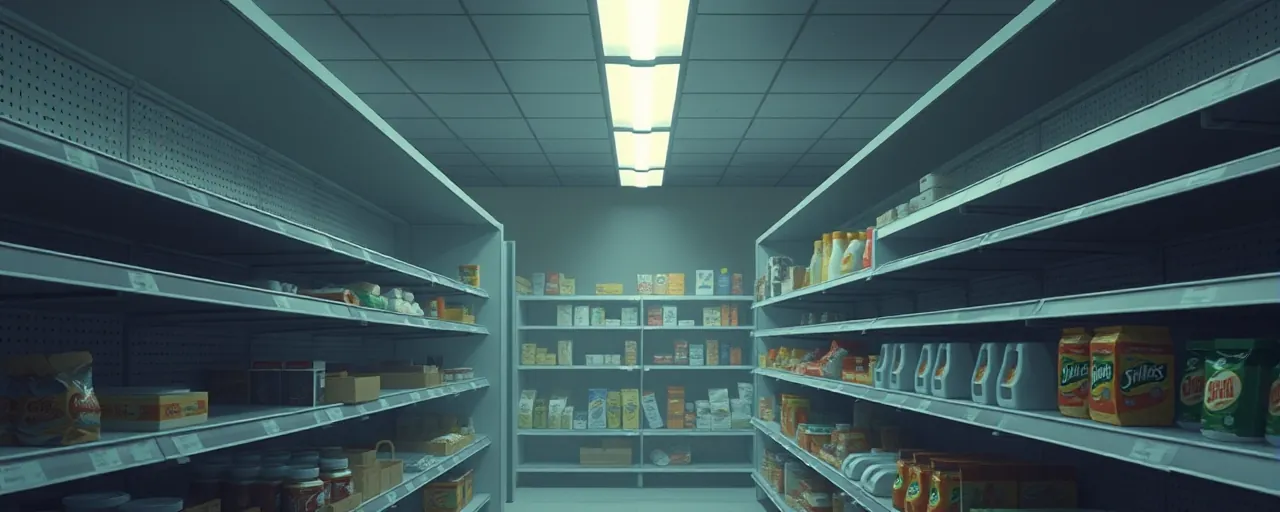A Sharp Decline in Optimism
American households are feeling the weight of economic uncertainty, with consumer confidence taking a steep dive in April 2025. The University of Michigan’s Consumer Sentiment Index, a key gauge of how people view their financial prospects and the broader economy, dropped to 52.2, marking one of its lowest readings ever. This figure, down 32.4% from a year ago, paints a stark picture of growing unease across the nation.
The survey, which polls about 600 households each month, showed pessimism cutting across all demographics, from young to old, rich to poor. Middle-income families, in particular, reported a sharp drop in confidence, citing rising prices and fears of a looming recession. This broad-based decline suggests that economic challenges are hitting close to home for many, reshaping how people plan their finances.
Inflation Expectations Surge
A major driver of this gloom is inflation, with households expecting prices to climb rapidly. The survey found that people anticipate inflation to hit 6.5% over the next year, the highest level since 1981. Even longer-term expectations, over five to ten years, ticked up to 4.4%, signaling that many believe high prices are here to stay.
These expectations are not just numbers; they shape real-world behavior. When people expect prices to rise, they may rush to buy goods now, driving up demand and, ironically, fueling the very inflation they fear. Alternatively, some cut back on spending altogether, opting to save more in case tougher times lie ahead. Both responses are already visible, with durable goods purchases spiking and discretionary spending on services like dining out taking a hit.
What’s Driving the Inflation Fears?
Several factors are stoking these inflation concerns. Economists point to persistent supply chain disruptions, which have raised the cost of everything from electronics to groceries. Geopolitical tensions, including conflicts in the Middle East and Ukraine, have kept energy prices volatile, while new trade policies, such as proposed tariffs on imports, are expected to push prices higher. The Federal Reserve’s decision to keep interest rates between 4.25% and 4.5% reflects its ongoing battle to tame inflation, but the effects are slow to materialize.
Some analysts highlight corporate pricing power as a key culprit. Research shows that elevated profit margins have accounted for a significant share of price increases since 2019, with companies in concentrated industries passing on higher costs to consumers. Others argue that massive fiscal stimulus during the pandemic, including the $1.9 trillion American Rescue Plan, flooded the economy with demand at a time when supply chains were struggling, setting the stage for today’s price pressures.
Shifting Consumer Behavior
Economic uncertainty is reshaping how Americans spend and save. While a strong labor market and rising household wealth propped up spending earlier in 2025, recent data show a pivot toward caution. The personal saving rate climbed to 4.6% in February, up from 4.3% the prior month, as households braced for higher prices and potential economic slowdown.
This shift is uneven. High-income households continue to spend, buoyed by financial cushions, but middle- and lower-income families are tightening their belts, focusing on essentials and cutting back on extras like travel or entertainment. Many consumers rushed to buy big-ticket items before new tariffs could raise prices, but this “pull-ahead” buying is expected to fade, potentially dampening demand later this year.
A Global Context
The U.S. is not alone in grappling with economic unease. Globally, inflation has eased from its 2022 peak of nearly 9% but remains above central bank targets in many countries. Emerging markets face added pressure from currency depreciation, while advanced economies like the euro area are seeing slower growth as central banks maintain tight policies. The European Central Bank, for instance, recently cut rates by 25 basis points, reflecting cautious optimism about inflation but concern about growth.
Trade protectionism and geopolitical risks continue to complicate the picture. New U.S. tariffs, potentially reaching 10-20% on all imports, could ripple through global markets, raising costs and reigniting inflationary pressures. Meanwhile, climate-related disruptions and OPEC’s oil output cuts keep energy and food prices unpredictable, adding to the global economic strain felt by consumers.
Looking Ahead
The sharp drop in consumer sentiment signals challenges ahead for the U.S. economy. With spending accounting for a significant chunk of economic activity, a sustained pullback could slow growth, especially if businesses scale back investment in response. The Federal Reserve faces a delicate balancing act: keeping rates high enough to curb inflation without tipping the economy into recession. Forecasts suggest U.S. GDP growth may slow to 1.7% in 2025, with unemployment edging up slightly.
For households, the road forward depends on whether inflation eases and confidence rebounds. Policymakers, businesses, and consumers alike are navigating a complex landscape, where global and domestic pressures intersect. The University of Michigan’s survey offers a sobering reminder that, for many Americans, economic stability feels out of reach, and their choices in the coming months will shape the nation’s trajectory.
